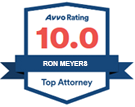Workplace safety is a paramount concern, yet accidents can happen even in the most conscientious environments. If you find yourself facing a workplace injury in Washington, understanding the legal avenues for compensation is essential. While workers’ compensation covers injuries caused by employer negligence, a lesser-known avenue, third-party liability, can open doors to additional compensation.
At Ron Meyers and Associates, we’re here to guide you through the intricate landscape of workplace injury cases involving third-party liability, ensuring you receive the compensation you rightfully deserve.
Understanding Third-Party Liability in Workplace Injuries
In the realm of workplace injuries, a vital concept often overlooked is third-party liability. While workers’ compensation offers a safety net for injuries arising from employer negligence, third-party liability introduces an additional layer of accountability. This legal consideration shines a light on a distinct avenue for compensation—one that extends beyond the immediate workplace environment and holds parties beyond the employer responsible for their actions.
A Paradigm Shift: Beyond Employer Responsibility
Workers’ compensation is designed to provide financial support when injuries stem from employer negligence. However, there are instances where injuries are caused by entities external to the employer-employee relationship. This is where third-party liability becomes pivotal. Instead of solely focusing on internal employer responsibility, third-party liability extends its reach to encompass those outside the immediate employment context.
Diverse Players in Third-Party Liability
Third-party liability casts a wide net of accountability, involving parties beyond the employer. Consider subcontractors, whose actions or negligence can contribute to workplace accidents. Equipment manufacturers also play a role; faulty machinery or defective tools they produce can result in injuries. Furthermore, even individuals like negligent drivers, unrelated to the workplace, can be held accountable if their actions cause harm to an employee in the course of their job-related duties.
Unveiling the Scope of Responsibility
In essence, third-party liability widens the spectrum of responsibility in workplace injury cases. It acknowledges that injuries can stem from various sources, not confined to the immediate work environment. This recognition is crucial, as it allows those who suffer workplace injuries due to third-party negligence to pursue compensation beyond the boundaries of traditional workers’ compensation claims.
Avenues for Compensation Beyond Confines
Third-party liability offers an essential avenue for comprehensive compensation. It recognizes that injuries can result from actions or omissions that fall outside the purview of the employer’s direct control. By embracing third-party liability, you’re taking a step towards ensuring that all responsible parties are held accountable for their actions. This approach doesn’t replace workers’ compensation; rather, it complements it, aiming to address the full spectrum of injury scenarios.
Examples of Third-Party Liability Scenarios
To truly grasp the impact of third-party liability in workplace injury cases, it’s crucial to explore real-life scenarios where this concept comes into play. These examples shed light on the various situations in which third-party negligence can intersect with workplace injuries, resulting in the need for comprehensive compensation.
Scenario 1: The Faulty Equipment Dilemma
Imagine a dedicated construction worker diligently performing their duties on a construction site. Tragically, an injury occurs due to a malfunction in the equipment they were using. In this scenario, third-party liability emerges when the manufacturer of the faulty equipment is held accountable for their negligence. The failure to produce safe machinery becomes a contributing factor to the worker’s injury, resulting in a legitimate claim for compensation against the manufacturer.
Scenario 2: The Negligent Delivery Driver
In another scenario, picture a delivery driver en route to make a work-related delivery. However, due to their negligence, they cause a collision resulting in injury. Here, the delivery driver’s actions are outside the immediate workplace setting, but their negligence directly impacts an employee in the course of their job. This situation triggers third-party liability, holding the negligent driver responsible for their actions and ensuring that the injured employee has avenues for rightful compensation.
Scenario 3: Subcontractor Involvement
A construction project often involves multiple parties working collaboratively. If a subcontractor, responsible for a specific aspect of the project, fails to adhere to safety standards, their negligence can lead to a workplace injury. In this scenario, the injured employee can pursue third-party liability against the subcontractor, acknowledging their role in causing harm. This scenario demonstrates how third-party liability goes beyond the direct employer-employee relationship to encompass collaborators in a project.
Scenario 4: Product Liability
In the realm of manufacturing, an employee using a product designed and manufactured by another entity may sustain injuries due to a product liability defect. This instance reveals a prime example of third-party liability. If the defect can be attributed to the negligence of the manufacturer or designer, the injured employee can hold them accountable for the resulting harm, seeking compensation for their injuries and related losses.
The Power of Third-Party Liability
These scenarios collectively highlight the diverse ways third-party liability intersects with workplace injuries. Third-party liability recognizes that injuries can result from various sources beyond direct employer actions. By acknowledging these scenarios, you’re acknowledging the multifaceted nature of workplace injuries and the necessity of seeking compensation from all responsible parties.
Key Legal Considerations in Third-Party Liability Claims
Navigating the terrain of third-party liability claims demands a keen understanding of the legal intricacies that underpin these cases. When pursuing compensation beyond workers’ compensation, several key legal considerations come into play, each serving as a crucial building block in establishing the accountability of the third party.
Unraveling the Elements: Duty of Care and Negligence
Central to third-party liability claims are the legal concepts of duty of care and negligence. Demonstrating that the third party owed a duty of care to the injured employee is foundational. This duty, often dictated by their role or involvement, signifies their responsibility to act prudently and avoid actions that could lead to harm. When this duty is breached, and negligence results in harm, it opens the door to liability. Establishing negligence involves proving that the third party failed to uphold their duty of care, acting in a way that any reasonable person in their position would not have.
The Link of Causation and Foreseeability
Key to third-party liability claims is establishing a clear link of causation between the third party’s breach of duty and the resulting injury. Demonstrating that the negligence directly led to the harm suffered by the employee is crucial. This causal connection must be evident and well-supported by compelling evidence. Additionally, foreseeability enters the equation—a concept that revolves around whether the harm caused by the third party’s actions was foreseeable. If a reasonable person could have anticipated the potential for harm, it strengthens the case for liability.
The Role of Legal Representation: Navigating Complexity with Expertise
As these legal considerations intertwine, the complexities of third-party liability claims become apparent. Collecting the necessary evidence, constructing a compelling argument, and navigating the legal intricacies demand a seasoned legal team. At Ron Meyers and Associates, our experienced attorneys possess the expertise needed to unravel these complexities. We understand the significance of building a robust case that showcases the breach of duty, the link of causation, and the foreseeability of harm. With our guidance, you can confidently traverse the intricate legal landscape, ensuring that your rights are protected and justice is served.
Benefits of Pursuing Third-Party Liability Claims
When it comes to seeking compensation for workplace injuries, pursuing third-party liability claims in conjunction with workers’ compensation can lead to a range of distinct advantages. These advantages not only provide financial relief but also embody a quest for justice and a commitment to accountability. Comprehensive Compensation Beyond Boundaries
One of the most compelling benefits of pursuing third-party liability claims is the potential for additional compensation that goes beyond the scope of workers’ compensation coverage. While workers’ compensation addresses basic medical expenses and a portion of lost wages, third-party liability claims can encompass a broader spectrum of economic and non-economic losses. These can include pain and suffering, emotional distress, loss of companionship, and other intangible hardships that often accompany workplace injuries.
A Quest for Justice and Accountability
Third-party liability claims transcend the realm of financial compensation. They embody a pursuit of justice—a determination to hold all parties responsible for their actions. By seeking accountability from negligent third parties, you’re contributing to a culture of workplace safety and responsibility. Your actions resonate beyond your individual case, encouraging greater vigilance and adherence to safety standards across various industries.
Maximizing Compensation Possibilities
The pursuit of comprehensive compensation is not just about receiving what you’re owed; it’s about maximizing the possibilities available to you. By exploring third-party liability claims, you’re enhancing your chances of securing the financial support needed to cope with the aftermath of a workplace injury. This support can help you focus on recovery, rehabilitation, and rebuilding your life in the face of unexpected challenges.
Challenges and Complexities in Third-Party Liability Claims
While third-party liability claims offer substantial benefits, they are not without challenges. Determining liability in complex scenarios, gathering compelling evidence, and establishing the causation link demand legal expertise. Navigating multiple legal processes can be overwhelming for individuals without legal background. This is where our experienced attorneys step in—to handle the intricacies, ensuring your rights are protected and justice is served.
Collaborating with Experienced Attorneys in Third-Party Liability Cases
At Ron Meyers and Associates, we have a proven track record of successfully handling third-party liability cases in workplace injuries. Our experienced attorneys understand the intricacies involved and are committed to providing you with the legal guidance you need. We’ll stand by your side, helping you navigate the complexities of these claims, so you can focus on recovery while we handle the legal complexities.
Seeking Full Compensation and Justice through Third-Party Liability Claims
Workplace injuries can disrupt lives and create financial hardships. Pursuing third-party liability claims offers a path to holistic compensation and justice. By combining workers’ compensation and third-party liability claims, you’re ensuring you receive the comprehensive support you need during this challenging time. At Ron Meyers and Associates, we’re here to assist you every step of the way. Reach out to us to explore your options and embark on a journey toward rightful compensation and justice.





